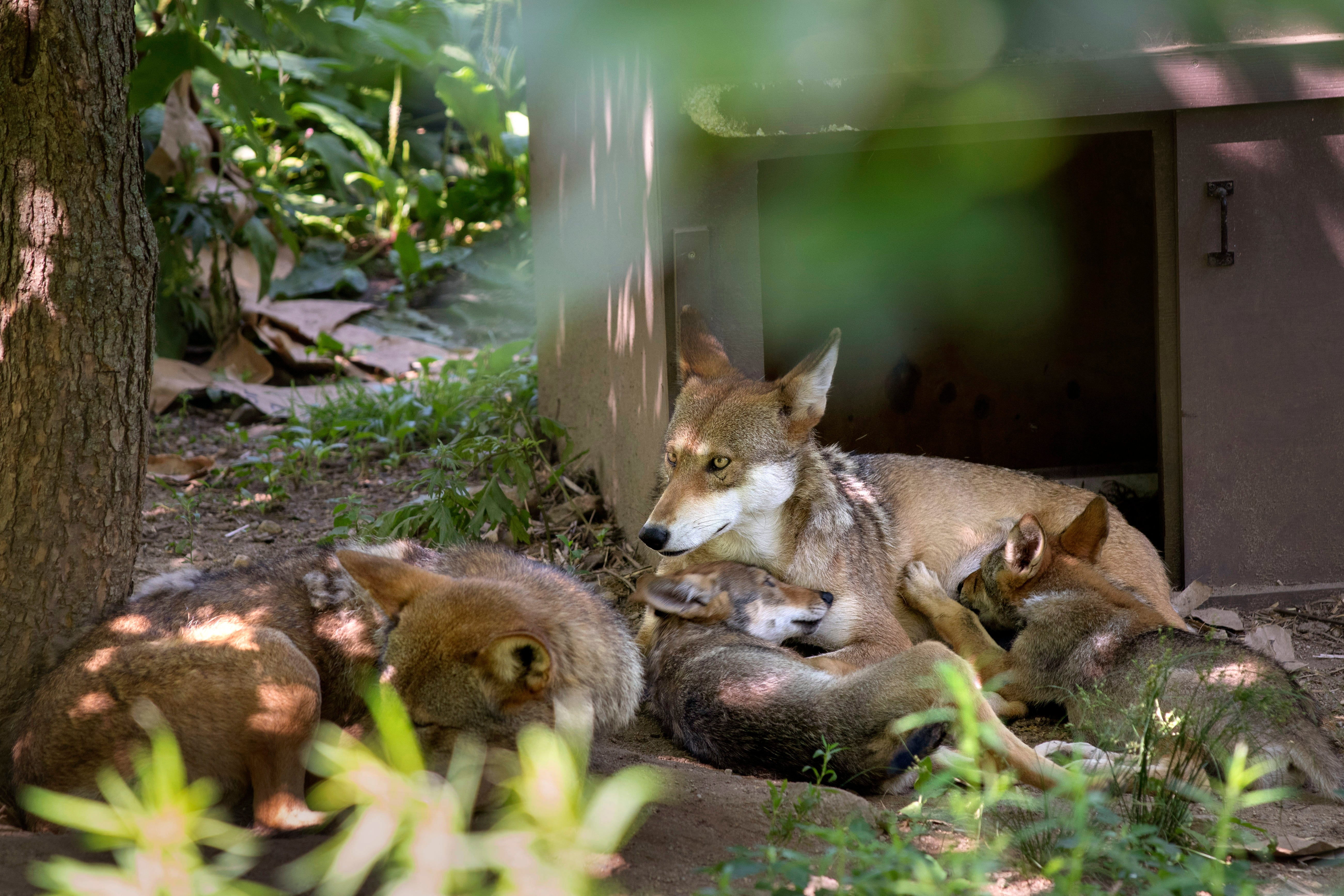Takeaways from AP’s reporting on efforts to restore endangered red wolves to the wild
Over 25 years, the red wolf went from being declared extinct in the wild to becoming hailed as an Endangered Species Act success story

The red wolf’s journey from extinction in the wild to conservation poster child and back to the brink has been swift and stunning.
The only wolf species unique to the United States, Canis rufus once roamed from Texas to Long Island, New York. Today, the last wild populations, totaling about two dozen animals, are clinging to existence on two federal wildlife refuges in eastern North Carolina.
The U.S. Fish and Wildlife Service is preparing an updated recovery plan to ensure the species’ survival in the wild. But the plan counts on private landowners to tolerate the wolves, and history is not on the side of “America’s wolf.”
Here are the key takeaways from the AP’s reporting:
WHY WERE RED WOLVES DECLARED EXTINCT IN THE WILD?
After generations of killings, habitat loss and pressure from human development, the red wolf was declared “threatened with extinction” under the Endangered Species Preservation Act of 1966. With the signing of the Endangered Species Act in 1973, the last known families were pulled from the coasts of Texas and Louisiana and placed in captive breeding programs. The species was declared extinct in the wild in 1980.
WHAT HAPPENED AFTER RED WOLVES WERE REINTRODUCED TO THE WILD?
By 1987, the captive population was considered robust enough to try to reintroduce Canis rufus to the wild. Populations were established at Alligator River Wildlife Refuge in North Carolina and later in the Great Smoky Mountains National Park. The mountain experiment was terminated due to low pup survival and failure to thrive, but the coastal population eventually grew from eight animals to about 120 in 2012.
WHY DID THE EASTERN NORTH CAROLINA WOLF POPULATION COLLAPSE?
A combination of vehicle strikes and gunshots, coupled with the interbreeding of the wolves and invasive coyotes and pressure from private landowners, led Fish and Wildlife to suspend releases from the captive population. Conservationists sued the agency, claiming it had abandoned its duty under the Endangered Species Act. The wild numbers dropped to as low as seven known wolves before the agency resumed captive-bred releases.
HOW CAN YOU TELL THE DIFFERENCE BETWEEN A COYOTE AND A RED WOLF?
Red wolves are substantially larger, weighing up to 80 pounds (36.2 kilograms), while the largest coyotes in the area weigh in at around 35 pounds (15.8 kilograms), says Joe Madison, North Carolina manager for the Red Wolf Recovery Program. The wolves’ heads also are larger, with broader muzzles. “Red wolves, a lot of times look like they’re walking on stilts because their legs are so long,” Madison says, noting they even move across the landscape differently. While a coyote will slink along the edges of woods and brush, the wolves walk down the middle of the road. “They know they’re the apex predator,” he says. “They’re the top dog.”
WHAT IS THE AGENCY DOING TO AVOID A REPEAT OF THE LAST COLLAPSE?
Fish and Wildlife has stepped up public education about the wolves, placing orange collars on them to keep them from being mistaken for coyotes, erecting road signs warning motorists to drive with caution and partnering with private landowners to share their property with the wolves. They are sterilizing coyotes in the area and euthanizing coyote-wolf hybrids when they’re found.
IS IT EVER LEGAL TO SHOOT A RED WOLF?
The ’intentional or willful” killing of a red wolf is against federal law, although landowners are allowed to remove a “nuisance” wolf if it attacks people, their livestock or pets. The killing of a wolf may also be legal if it is “incidental” to otherwise legal activities, such as trapping coyotes. Any killing must be reported to Fish and Wildlife within 24 hours. There have been no known red wolf attacks on people, and only nine suspected attacks on farm animals or pets, Madison says.
Subscribe to Independent Premium to bookmark this article
Want to bookmark your favourite articles and stories to read or reference later? Start your Independent Premium subscription today.
